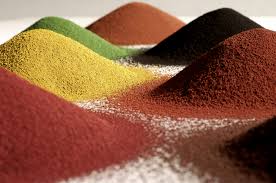Understanding Inorganic Pigments: Their Benefits and Applications
2024-09-02
Inorganic pigments are a staple in the world of colorants, known for their durability, stability, and versatility. These pigments, derived from inorganic compounds, offer a wide range of colors and applications across various industries. In this blog post, we’ll delve into the characteristics of inorganic pigments, their advantages, and their diverse applications.
1. What Are Inorganic Pigments?
Inorganic pigments are colorants made from inorganic compounds, which are typically metal oxides, sulfides, or chromates. Unlike organic pigments, which are derived from carbon-based compounds, inorganic pigments are based on mineral sources. They are known for their robust chemical and physical properties, making them ideal for a variety of applications.
2. Key Benefits of Inorganic Pigments
Inorganic pigments offer several advantages over their organic counterparts:
- Durability: Inorganic pigments are highly resistant to light, heat, and chemical degradation. This makes them ideal for use in applications where color stability is crucial, such as in outdoor coatings and automotive finishes.
- Color Stability: These pigments maintain their color over time, even in harsh environmental conditions. This stability ensures that products retain their aesthetic appeal and performance.
- Non-Toxicity: Many inorganic pigments are non-toxic and environmentally friendly, making them suitable for use in products like toys, food packaging, and cosmetics.
- Opacity: Inorganic pigments generally offer excellent opacity, which means they can effectively cover surfaces and mask underlying colors or imperfections.
3. Common Types of Inorganic Pigments
Several types of inorganic pigments are widely used in various industries:
- Titanium Dioxide (TiO2): Known for its bright white color and excellent opacity, titanium dioxide is one of the most commonly used white pigments. It’s widely used in paints, coatings, and cosmetics.
- Iron Oxides: These pigments come in a range of colors, including red, yellow, and brown. They are valued for their earthiness and are used in construction materials, coatings, and cosmetics.
- Chromium Oxides: Chromium oxide pigments provide a range of green shades and are known for their exceptional stability and durability. They are used in ceramics, glass, and coatings.
- Ultramarine Blue: Made from sodium aluminum silicate, ultramarine blue is a vibrant and stable blue pigment used in art, cosmetics, and coatings.
4. Applications of Inorganic Pigments
Inorganic pigments are used in a wide variety of applications due to their unique properties:
- Paints and Coatings: Their durability and color stability make inorganic pigments ideal for use in paints and coatings for both indoor and outdoor applications. They are commonly used in architectural coatings, industrial finishes, and automotive paints.
- Plastics and Rubber: Inorganic pigments are used in the manufacturing of colored plastics and rubber products. Their resistance to heat and UV light ensures that the colors remain vibrant and consistent.
- Cosmetics: The non-toxic nature of many inorganic pigments makes them suitable for use in cosmetics, including foundations, eye shadows, and lipsticks.
- Construction Materials: Inorganic pigments are used in cement, concrete, and other construction materials to achieve desired colors and improve aesthetics.
- Art and Craft: Artists often use inorganic pigments in paints and dyes due to their vibrant colors and long-lasting properties.
5. Environmental and Safety Considerations
While inorganic pigments are generally considered to be more environmentally friendly and safer than some organic pigments, it’s important to consider the source and disposal of these materials:
- Sourcing: Ensure that the pigments are sourced from responsible suppliers who adhere to environmental and safety regulations.
- Disposal: Proper disposal of inorganic pigments is essential to prevent environmental contamination. Follow local regulations and guidelines for the disposal of pigment waste.
Conclusion
Inorganic pigments offer a range of benefits, including durability, color stability, and non-toxicity, making them a versatile choice for various applications. From paints and coatings to cosmetics and construction materials, these pigments play a crucial role in many industries. By understanding their properties and applications, you can make informed decisions about the use of inorganic pigments in your projects.



